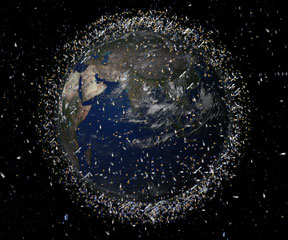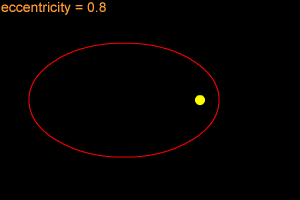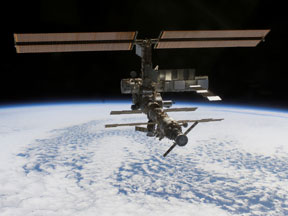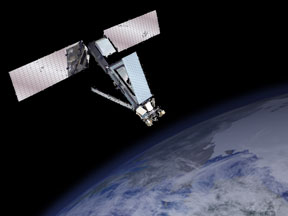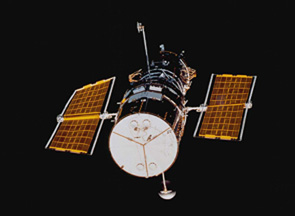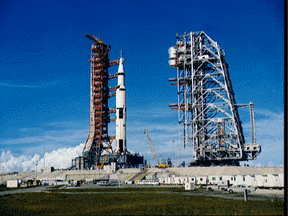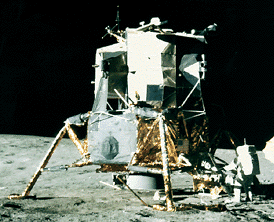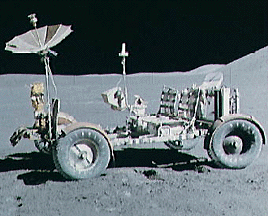Click on image for full size
Image courtesy of ESA.
Space Junk
There are several thousand trackable objects in near-Earth space. These objects are baseball size or larger and can be tracked by ground-based radars. Of these thousands of items, only a few hundred are operational spacecraft. The rest is space junk! This space junk or orbital debris includes things such as hatches blown off space modules, garbage discarded into space from past space stations, or satellites that are no longer in use.
In addition to the thousands of trackable objects, there are millions of flecks of paint, metal or plastic that are currently in space. Much of this smaller space junk has come from the explosion of rocket stages or the explosion of satellites and their parts. Unfortunately, the past 50 years of space exploration have generated a lot of junk that poses a significant threat to spacecraft now in orbit.
Human-made debris orbits at a speed of roughly 28,000 km/hr (17,500 miles/hour)! Think of the damage even a small speck of paint could do if impact occurred at such high speeds. Even an object as small as 1 cm in diameter has enough kinetic energy to disable a medium-sized spacecraft!
Space junk is particularly a problem for long duration Earth-orbiting spacecraft, especially the International Space Station (ISS). On a list of hazards for the ISS compiled by the NASA Safety Office, the threat of impacts by micrometeorites and orbital debris ranked #6 out of 10 hazards. NASA uses mainly preventative measures when it comes to dealing with space junk, and that means heavy shielding of the ISS and other spacecraft.
Spacecraft must be designed to withstand hypervelocity impacts with pieces of space debris. Testing must be done on the shielding used for future spacecraft. Such experiments were actually undertaken in the Long Duration Exposure Facility (LDEF). The LDEF was deployed in orbit April 1984 by the Shuttle Challenger. It was retrieved 5.7 years later. During this time the LDEF was designed to take meteoroid and debris surveys involving many different materials.


